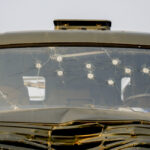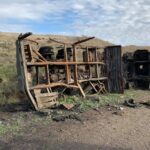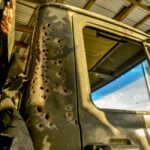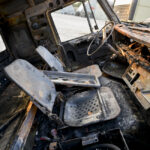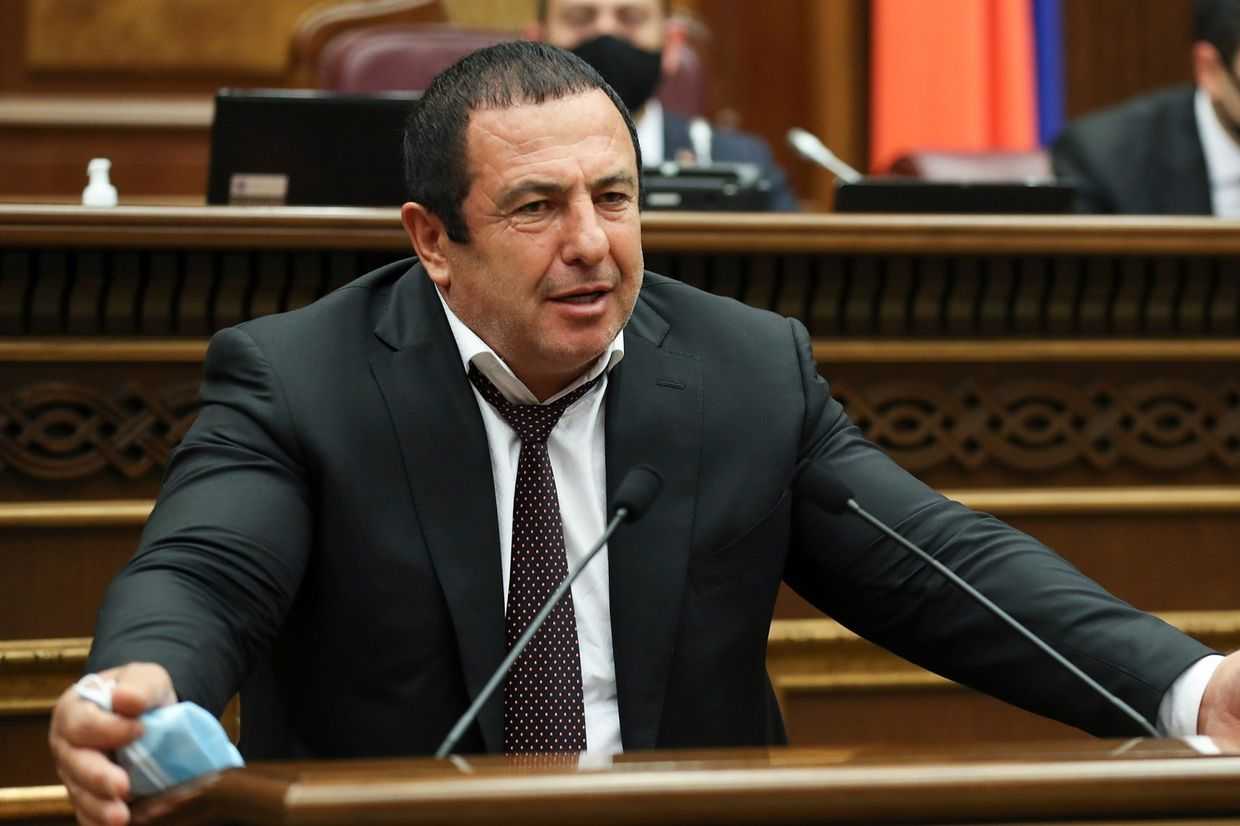
Shells, war crimes, and a belated homecoming, for Ahmad Mukhtar, an Azerbaijani journalist, peacebuilder, and IDP — reporting on the second Nagorno-Karabakh war was a deeply personal affair.
The day the war began, 27 September, Ahmad Mukhtar sped towards the front, towards the region of Aghdam, where, just across the line of contact, once stood the house he grew up in.
During the 44 days of fighting, Ahmad would spend roughly 20 near the frontline. He documented the impact the war had on Azerbaijani civilians and reckoned not only with his status as an IDP, but what this war meant to him as both a journalist and peacebuilder.
‘I thought these [combat] operations would be quite similar to the ones in 2014, or 2016’, he told OC Media adding that the scale and duration of the fighting caught him by surprise.
Ahmad received accreditation from the Azerbaijani authorities to report in the Aghdam region, and in the cities of Barda and Tartar, as well as surrounding villages. He was not allowed to cover active combat and was only able to document the destruction in civilian areas. Nor was he allowed to take photos of military equipment, military vehicles, or buildings used by the military.
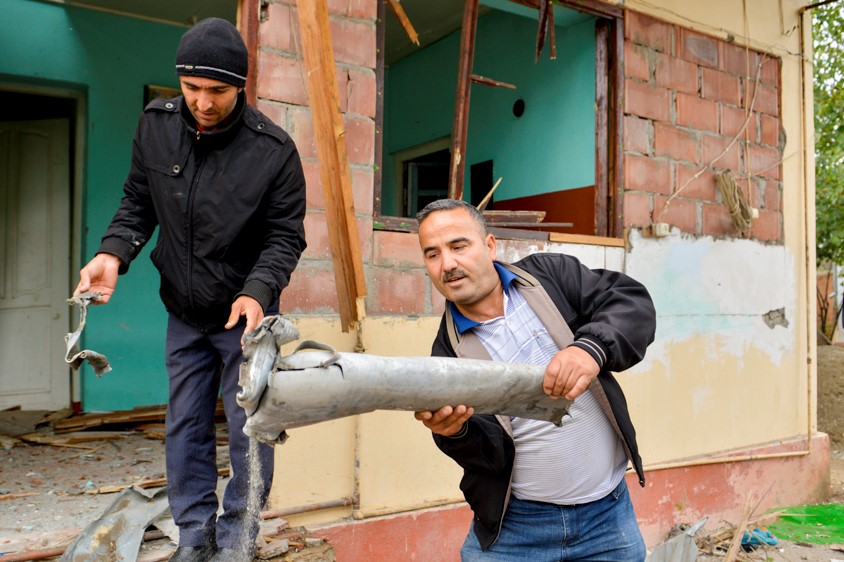
It didn’t make much difference to Ahmad. He says he was not interested in taking photos of tanks and soldiers, preferring to tell the stories of civilians caught in the crossfire, the stories of those who, like him, have been displaced.
He has covered such stories for over 10 years, his first such reporting was in 2008 when he went to Georgia, to cover the August war.
Reporting under fire
Reporting from civilian areas near the front was not easy. Despite the areas not being a part of active battles between combatants, they were still damaged extensively by shelling and missile strikes. At least 144 civilians died during the war, almost entirely due to shelling. Of those 94 were Azerbaijani.
But beyond the emotional toll of taking images of death, destruction, and the pain of the survivors, Ahmad also had to deal with more immediate dangers. He recalls he and his colleague finding themselves under heavy shelling on more than one occasion.
Each time, he says, it was terrifying. They would hear the deadly whistle of the shells approaching through the air, waiting for the imminent explosion, and perhaps their own death. But when the shells missed, the two of them would laugh — somehow they were still alive.
‘There was no way to go on other than to try to laugh at the situation’, he says.
Ahmad told OC Media that while reporting, he relied heavily on the official statements of the Ministry of Defence, though he fact-checked as much of the information as possible.
‘We were much better informed by the ministry than if we only had information from locals’, he says, adding that special operation centres provided him with detailed information on civilian deaths, infrastructure damage, and the ongoing security situation.
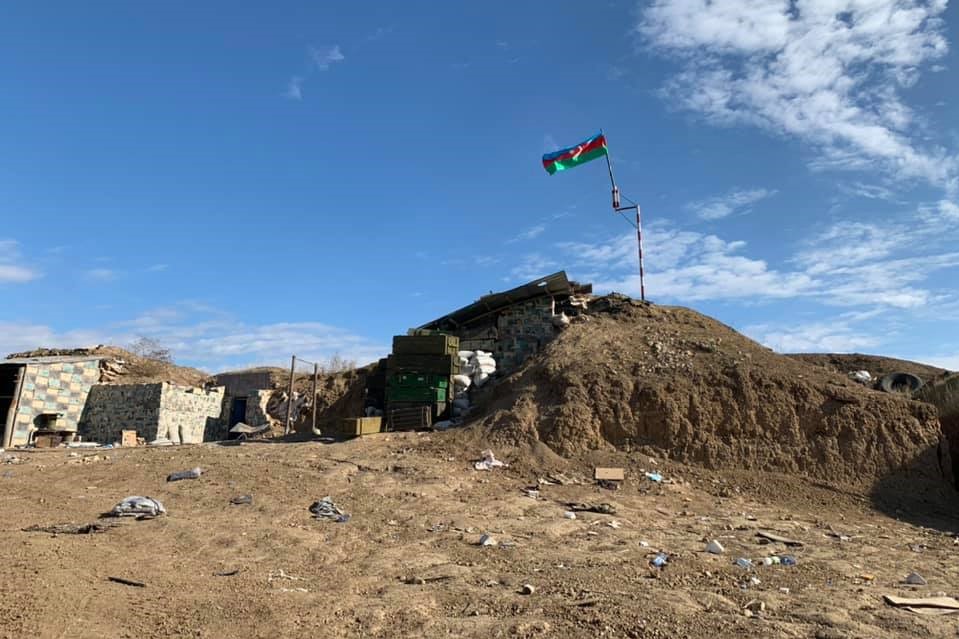

But he was not only an observer to the brutality of the war. On 30 September he found out that a close childhood friend had perished on the front.
There was nothing more heartbreaking for him in this war, he says, than when he went to visit and give his condolences to his friend’s grieving parents.
A child of war
Ahmad’s early childhood took place in the shadow of the first Nagorno-Karabakh war. He was born and grew up in the village of Magsudlu, near Aghdam. He and his family were forced to flee in 1993 when Armenian forces took the city.
He was 8-years-old the last time he saw his home.
‘When we were kids, I remember there was military equipment right behind our house, and we knew each projectile by the sound it made. We would fall asleep to the sounds of exploding shells and sometimes pieces of shells would fall into our garden. We even used to play with them’, he recalls.
As a child of war, it was devastating for Ahmad to take photographs of those who killed in this war.
‘This is not a victory of returning territory for me’, he says. ‘This is a disaster of mass human loss, nothing can return these lives.’ In particular, Ahmad was grieved by seeing the children who lost their parents to the war.
One of his last assignments of the war was covering the aftermath of the Barda strike, a cluster rocket attack on 28 October that hit the centre of the town. Twenty-one people were killed in the single deadliest day in the conflict for civilians.
On 7 October, three days before the tripartite peace declaration ended the fighting and the day Azerbaijani forces took the city of Shusha (Shushi), he was covering the funeral of a 16-year-old shepherd who was killed in the attack.
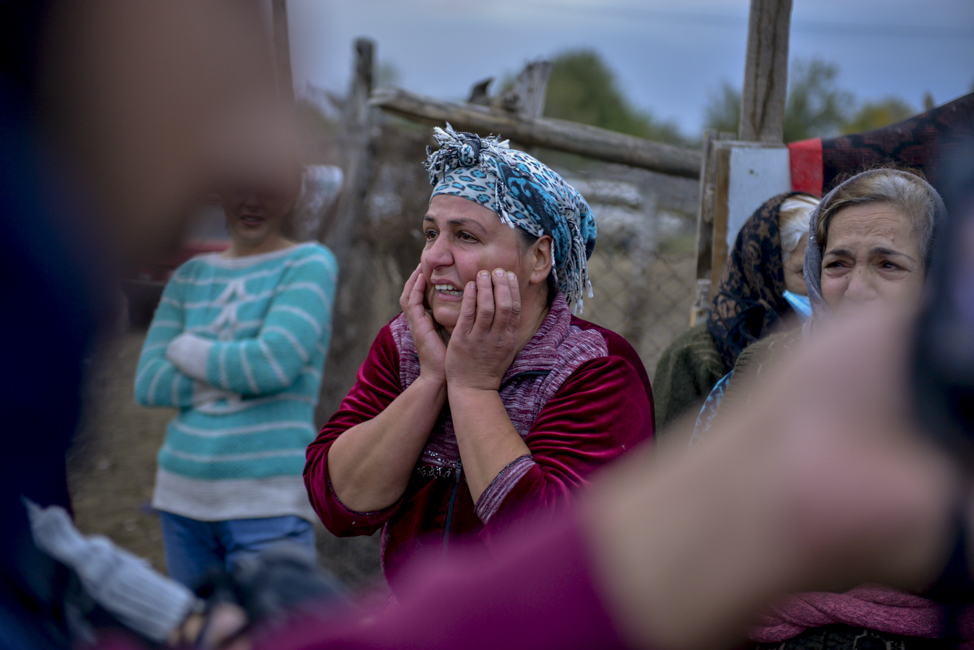
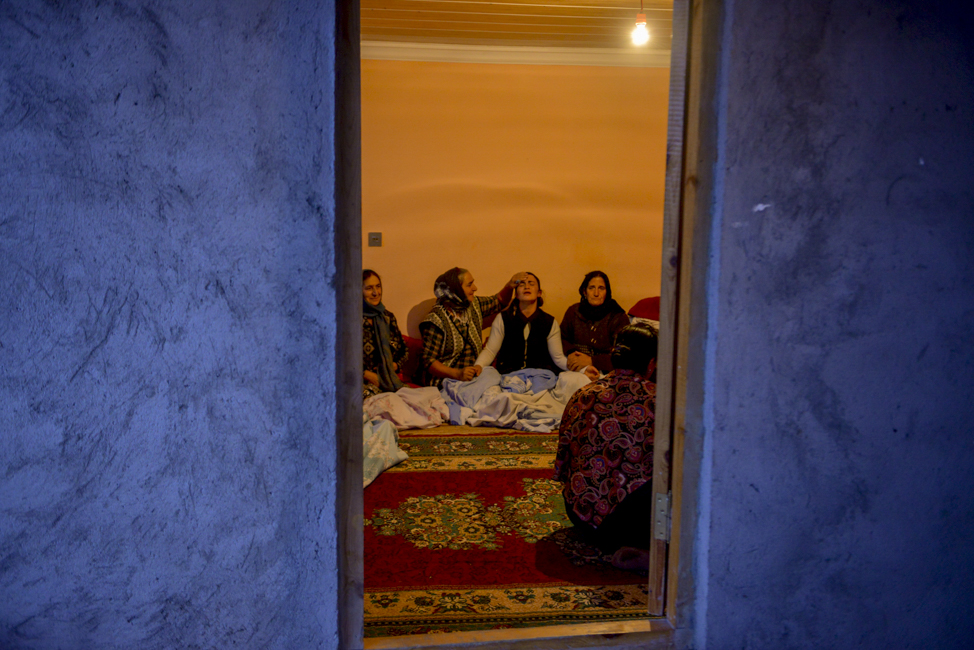
Images of death
Ahmad says it felt strange to spread images of the war’s brutal impact on civilians, because while he had to report the facts, he also understood that such images would only reinforce the desire for revenge.
He says that ultimately, it depends on Azerbaijani society how to react to these events and to his images. It is an emotional burden that he has no power over. For some he says it fuels a desire for vengeance, but perhaps for others, it could spark a reflection of what a horrible thing war is.
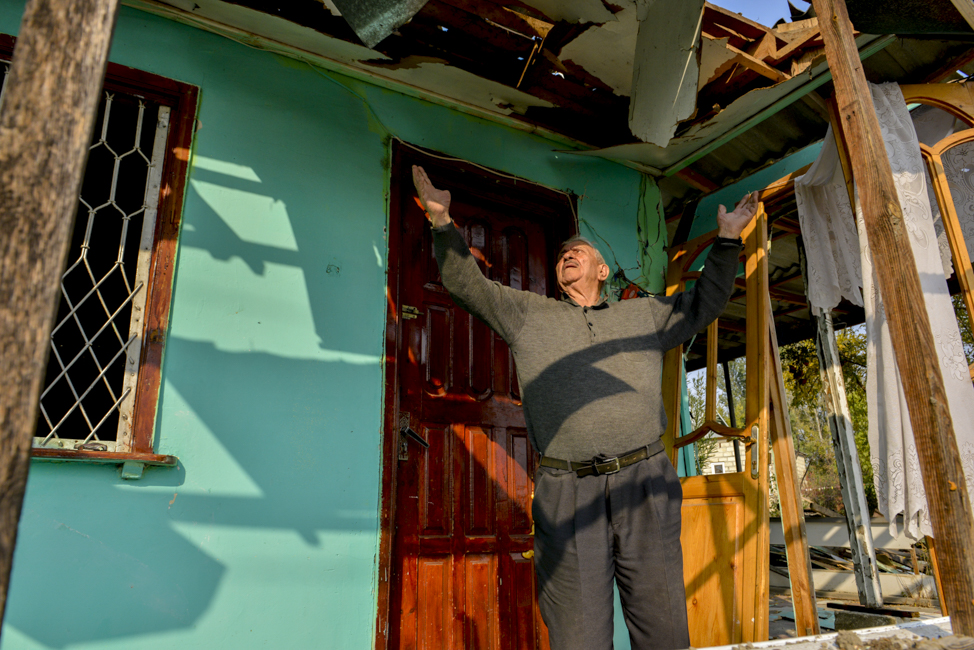
He recalls personally feeling a desire for vengeance for what happened in his own childhood, but that by learning more, he was able to change his understanding of the conflict and let go of this desire.
Over the years, Ahmad actively participated in peacebuilding projects. After the war, he says, everything has changed. ‘There is a new map, the positions have changed and future dialogue will have a different shape now.’
‘I fell victim to this conflict and was forcefully displaced myself, yet at the same time, as a peace advocate, I can see the destruction that happened on this land’. When he sees the photos of Kelbejar and Aghdam in ruins, he imagines how hard it will be to settle and revive these areas.
Inequality of access
Ahmad’s experience as an Azerbaijani war reporter was not universal. While some gained even greater access to events as they unfolded, others were not given accreditation to report on the war at all. Seymur Kazimov from the Baku Press Club was one of the few journalists to write directly from the frontline. He also covered events in Ganja and Barda, as well as the lives of IDPs, for Aljazeera.
On 29 October, Seymur was the first journalist to enter the newly taken cities of Jabrail and Gubadli. ‘If there is active combat and you are in the conflict zone, of course, your life is already at risk’, he reflects.
Like Akhmad, Seymur also lost someone close to him. ‘My brother called me during work and told me that my cousin had become a martyr’, he says. He says that in this kind of circumstance, it is very hard to stay neutral.
He covered both of the bombings of Ganja city’s residential areas, as well as in Barda city, physically being there meant that they could be bombed at any time. In Tartar, he spent nights in bunkers and witnessed how civilians were evacuating from the bombing. ‘Every time I saw a house I thought this could have been my house as well’.
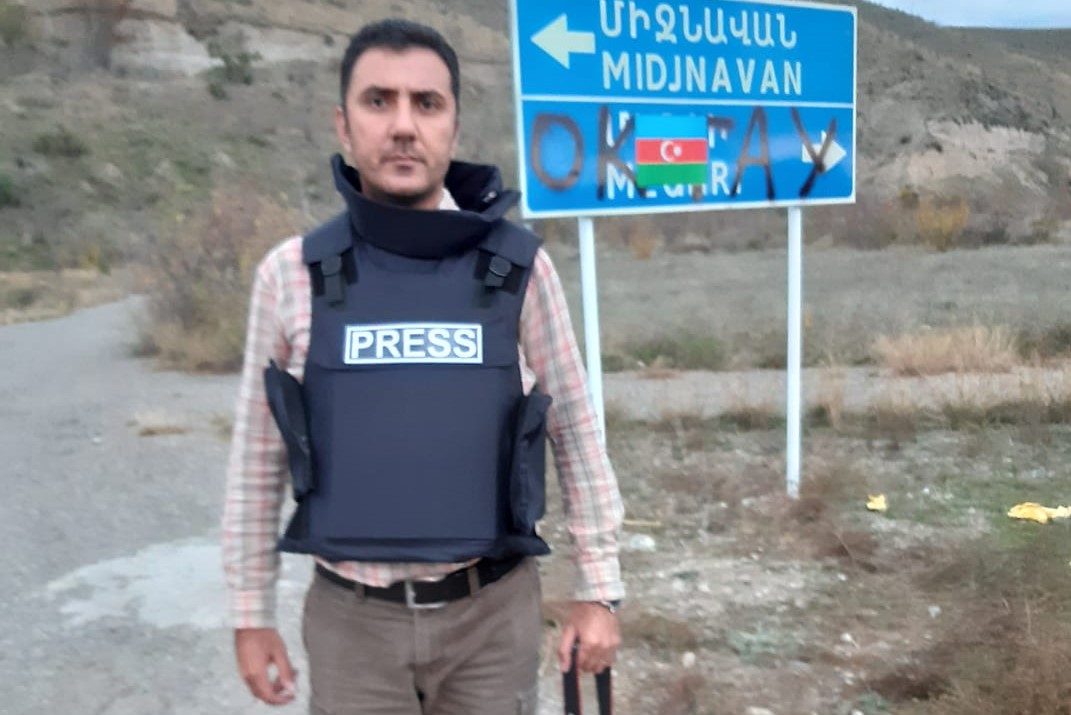
‘You may be a patriot, you may love your motherland, yet if you aim to cover events professionally, this means that you cannot cheat in your profession.’
Orkhan Azim, an independent journalist, falls on the other end of the spectrum. He was forced to sit the war out as he failed to gain the necessary permission from the authorities.
After failing to gain accreditation from the Defence Ministry, who required journalists be employed by a media agency, he wrote about this on Facebook. A week later, the ministry registered him but asked him to wait for a vest and helmet to become available. They never did.
Orkhan says he regrets not being given the chance to work during the war. He had hoped to look at the war through the lenses of his camera.
‘If anyone would give me the choice to be able to work during the war, yet there would be a possibility to stop it, I would definitely choose no war at all’, he says.
He also says that Azerbaijan should have had more, and better-trained conflict and war reporters. ‘I believe there were only a couple of days designated for preparations and this was not enough’.
Knowing that most reporters worked from far behind the frontline, he laments that they were not able to show the experiences and emotions of the Azerbaijani soldiers, only the sorrow and destruction of civilian lives in Ganja and other cities for instance.
Reflecting on what he experienced working during the war, and during his childhood, Ahmad Mukhtar says that both Armenian and Azerbaijani societies need to accept that the human cost of the wars in the 1990s and now have had an immeasurable loss.
He says that Azerbaijani society must start thinking about coexistence and that everyone born in Nagorno-Karabakh has the right to live there. He says this idea has to be popularised as policy in Azerbaijani schools and the media.
‘Modern warfare offered technology which allowed people to watch the war almost live’, he says. ‘Yet what I’d like to ask is whether we as a society have the capacity to get over this image of the enemy and settle this conflict through peaceful means.’
‘Only the ordinary people who are willing to coexist on this land will be able to bring peace’, he says. ‘There is nowhere to run from this’.
‘We should be building, not destroying.’
